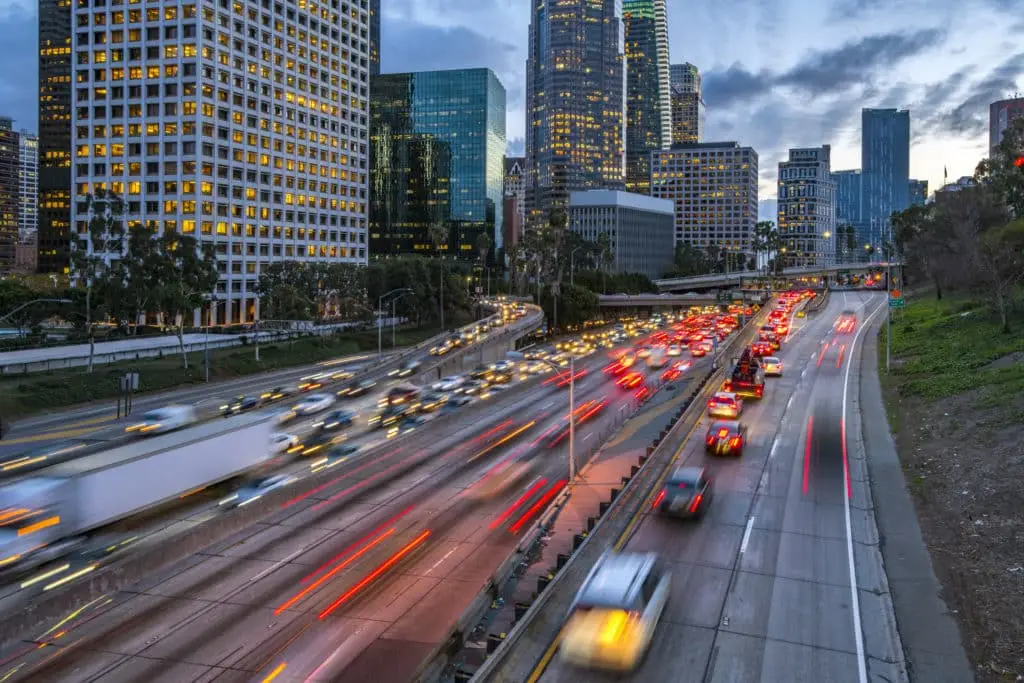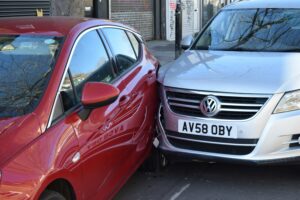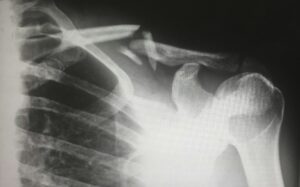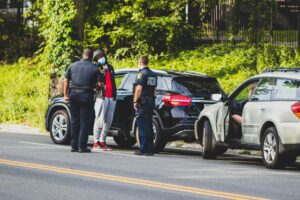Table of Contents
ToggleWho is at Fault in a Chain Reaction Car Accident?

California is an at-fault insurance state for car accidents, including chain reaction car crashes. Therefore, before you can recover any money for your injuries and damages, you must determine who is at fault in a pile-up.
California tort law holds all at-fault parties responsible for damages. Therefore, one or
more parties could be at fault for a multiple-car rear-end collision. Unfortunately, it can be difficult to assign fault for a chain reaction car accident.
How Do You Determine Fault in a Chain Reaction Accident?
It is not uncommon in Los Angeles to ask who is at fault in a five-car pile-up or a three-car rear-end accident. Chain reaction car crashes are common. For that reason, it is essential to understand your responsibility for a chain reaction traffic accident.
In a typical car crash, the driver who caused the collision is responsible for the other driver’s damages. For example, a driver runs a red light causing a collision. The driver who failed to yield the right of way is financially liable for the other driver’s medical bills, lost income, and other damages.
However, what happens when more than two cars are involved? Let’s assume a vehicle was rear-ended at a red light by another driver. Consequently, they were pushed into the intersection and hit by an oncoming vehicle that had the right of way.
The vehicle was stopped at the red light, so they did nothing to cause the collision. The driver who slammed into that vehicle had the right of way.
The fault for the crash would rest with the driver who rear-ended the stopped vehicle. That driver could be liable for the injuries and damages the other two drivers sustained.
Unfortunately, chain reaction accidents are rarely that clear. It could take an extensive investigation to determine which driver started the chain reaction accident.
Multiple Drivers Could Be Liable for Your Economic Damages
California has adopted a modified version of the doctrine of joint and several liability for personal injury cases.
Joint and several liability means that all of the people responsible for a car accident would be liable for the damages. For example, it would not matter if one person was 90% at fault and the other was 10% at fault. Both parties would be responsible for all of the damages.
However, California modified the doctrine. Under California law, all of the parties responsible for causing the car accident would be jointly liable for your economic damages. That means you could collect full compensation from any one of the responsible parties.
Economic damages include, but are not limited to, compensation for your:
- Medical expenses and bills
- Out-of-pocket expenses and costs
- Loss of income
- Property damage
- Future lost wages
- Diminished earning capacity
- Nursing care
- Personal care and home services
Because the parties are jointly liable, you have a better chance of recovering compensation for all financial losses. An at-fault party could sue the other at-fault parties to recover reimbursement for money the party paid that is more than their percentage of fault. However, that action would not involve you.
Parties Are Severally Liable for Non-Economic Damages in California
California’s modified version of joint and several liability only holds the at-fault parties responsible for non-economic damages corresponding to their percentage of fault. For example, if Driver A is 40% at fault and Driver B is 60% at fault, Driver A only has to pay an amount equal to 40% of your non-economic damages.
Non-economic damages include:
- Emotional distress
- Loss of enjoyment of life
- Scarring and disfigurement
- Mental anguish
- Physical impairment and disability
- Pain and suffering
- Diminished quality of life
Non-economic damages can account for a significant portion of a car accident settlement. Generally, permanent impairments increase the value of these damages because they cause lifelong pain and suffering.
Can I Receive Compensation if I Am Partially at Fault for the Cause of a Multi-Vehicle Accident?
You could recover compensation for damages if you are not entirely at fault for the cause of the car accident. Under California’s pure comparative negligence law, each driver is held liable for damages based on their percentage of fault. Therefore, if you are 20% to blame for the cause of a car crash, you could receive 80% of your damages from the other at-fault drivers.
Determining the percentage of fault is crucial. You want to receive the maximum compensation possible for your claim, and you do not want to be responsible for more damages than necessary. A Los Angeles car accident lawyer will investigate the cause of the crash to determine fault.
In some cases, the attorney may hire experts, including investigators and accident reconstructionists. However, it may take experts time to sort out the details that reveal who contributed to the cause of the accident.
Contact Our Car Accident Law Firm in Los Angeles, CA
If you were injured in an accident in Los Angeles, CA or you lost a loved one and you need legal assistance, please contact us to schedule a free consultation. One of our Los Angeles car accident lawyers at M&Y Personal Injury Lawyers will get in touch with you soon.
M&Y Personal Injury Lawyers – Los Angeles Office
4929 Wilshire Blvd Suite 960,
Los Angeles, CA 90010
866-864-5477



